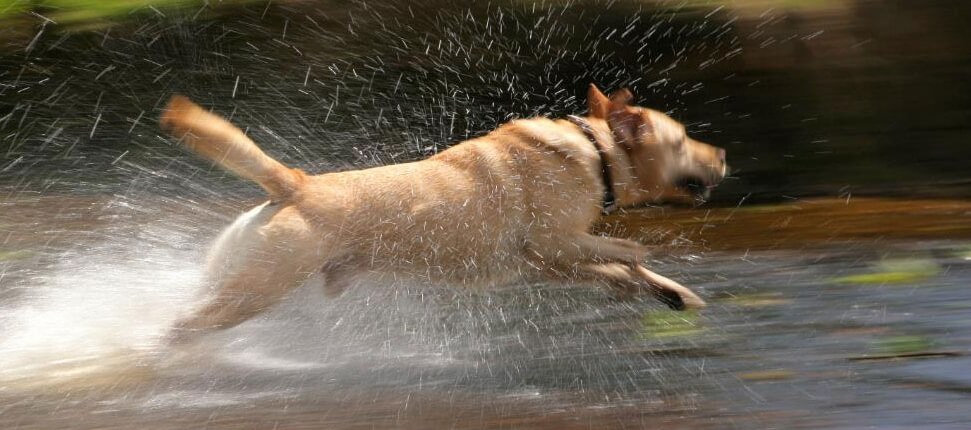Pet Containment – If Your Dog Runs Away
Our Top Tips on What To Do If Your Dog Runs Away.
Containment of a dog can be difficult at times, even more so when you are out enjoying the countryside with your pooch.
1. If you see your dog going, try to capture his attention.
Is your dog is too distracted to be off lead?
The position of ears or overall body language is an indicator of when its time to quickly clip a lead on.
However, if your dog is out of reach or has already taken a few steps in the wrong direction, your first step is to try to help him tune back in to you. Clap your hands, call his name as loudly as you can, whistle, use your most excited voice.
As counter intuitive as it sounds, run away from your dog. This may make him think you’re playing a game and he may chase you.
If your dog does come back to you, reward that. Clip a lead on and immediately give scratches and pats. Tell him he’s such a good boy. You want to recognise the correct behaviour—that he came to you. This is not a moment to punish him for running away.
2. Leave something of yours where you last saw your dog.
If your dog runs away in the forest leave your coat in the woods. Come back the next morning or at the end of the day, your dog might be curled up on your coat The familiar scent attracts the dog and gives a temporary home base.
3. Spread Out
You want to look for the dog, and will walk and walk and call and call until you find him. Get a group together and all do the same thing. Everyone takes a different route and walks out, calling for the missing dog. In this scenario, it’s helpful to have everyone’s phone numbers so that you can call off the search if someone finds the dog.
4. Wait where you are.
Inaction may not be your first instinct, but in my experience, a dog usually hasn’t actually run away. Just gone on his own adventure for a little while but will come back to the trail.
A dogs comfort zone can be up to 10 minutes long. Initially, stand on the trail and wait for him to come back.
5. Can your dog can be identified.
Ensure your dog never goes outside without his collar and tags. His tag should have name, home phone number and mobile number.
The times dogs haves been caught by strangers who have immediately called the numbers on the tags, and enabled pick up right away is a tried and tested means when it comes to your pet wearing a tag.
Be aware that sometimes, your dog may become separated from his collar. All dogs should have a microchip, to identify and associate with all of your contact numbers. The mobile number is important because it may be that you are not always at home.
6. Trust your dog.
Knowing a regular walking route very well may mean your dog could find his own way home.
7. Contact all the shelters and pounds within several miles.
If you do not find your dog within a certain amount of time, obviously you will start contacting the local dog warden/shelters in your area.
It’s a good idea to contact the shelters within a large range such as the next town or county over in all directions or even further. A dog can be turned into a shelter over 50 miles from where they were last seen.
This could be because the dog covered a large distance or because the people who found the dog drove quite a ways to a shelter.
The point is, contact all the shelters in your region and keep contacting them. Often.
8. Have a recent photo of your dog on hand.
Keep a recent photo of your pet on your phone or by email that you can easily pass along to animal control, use on social media or put on posters.
Losing your dog is scary no matter where you are. As dog owners, we want to do everything we can to prevent this dangerous, anxious scenario. However, if the worst happens, I hope that these tips on what to do if your dog runs away will help you reunite with your dog.
The same is true for a dog who has escaped the garden, unlike on a walk, you can manage and stop garden escapes by the use of our invisible fence pet containment system.





 Dogfence Ltd
Dogfence Ltd